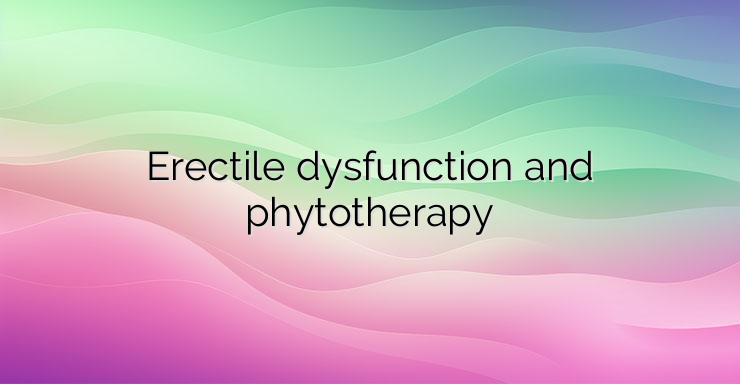The aging of the population in developed industrial countries pushes the problem of prostate hyperplasia and the often accompanying erectile dysfunction syndrome to the fore. A large percentage of patients with varying degrees of lower urinary tract symptoms due to benign prostatic hyperplasia also suffer from erectile dysfunction. Although 5-alpha reductase inhibitors are highly effective in the treatment of voiding disorders associated with the condition, these medications have frequent side effects regarding sexual function, which in turn is a common reason for many men to abandon their use. A side effect of the preparations is induction of the erectile dysfunction syndrome, they have a libido-suppressing effect and reduce ejaculate. With alpha adrenergic blockers, these side effects are less pronounced compared to other medications. The discovery that nitric oxide was a major factor in the mechanism of erection led to the creation of so-called phosphodiesterase inhibitors, and subsequent scientific studies found that they further improved erectile function. The fact that benign prostatic hyperplasia and erectile dysfunction worsen with advancing age poses serious therapeutic problems, because at this age men often suffer additionally from diseases of the cardiovascular system, which can be a contraindication for therapy with certain medications. Therefore, the application of phytoproducts for the treatment of benign hyperplasia and erectile dysfunction can be considered as a safe alternative, especially since the extracts of some plants are officially approved for treatment. Such are the extract of Serenoa repens, as well as Pygeum africanum – African cherry. Ginseng, in addition to being a strong tonic agent, has been found to increase the level of nitric oxide in the vessels of the penis, which is associated with its positive effect on erectile dysfunction. The inclusion of antioxidants in phytotherapy also gives additional beneficial effects, directly related to the protection of the vessel wall. This group includes the intake of vitamin E, as well as beta carotene. In terms of trace elements, foods rich in selenium have a good effect – for example, Brazil nuts. In addition to being a protector of the vascular wall, antioxidants are related to the prevention of oxidative stress, as a factor in spermatogenesis disorders.


Leave a Reply